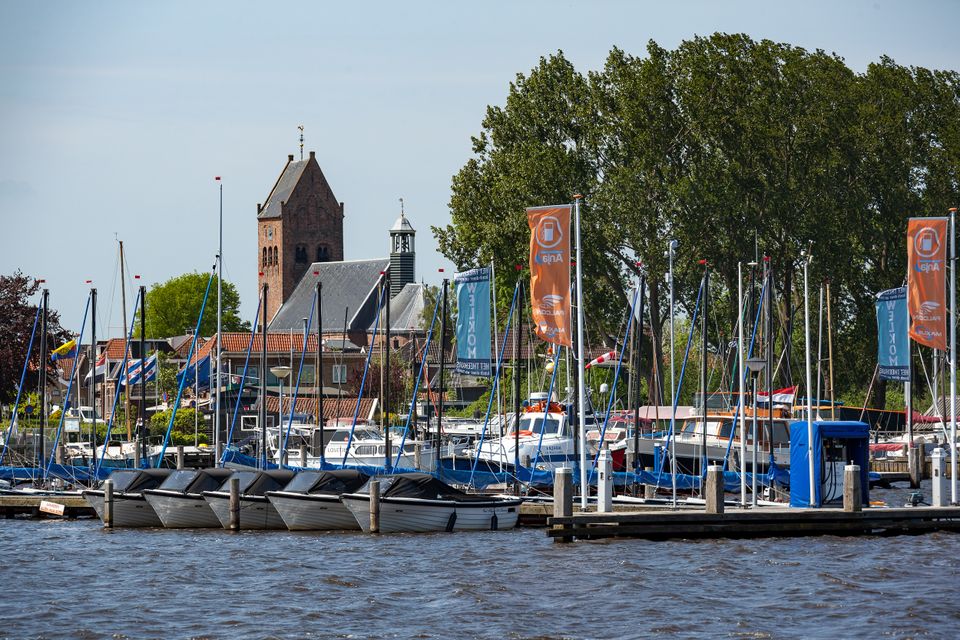Grou
Grou
Grou is a touristy yet characteristic watersports village in the heart of Friesland with a lively center.
Take a look
Grou is a touristy yet characteristic watersports village in the heart of Friesland.
The village has a charming center with cozy shops and various restaurants. There are pleasant terraces to be found, both in the center and along the waterfront.
From Grou, you can navigate in different directions across the Frisian lakes. Even non-water sports enthusiasts can enjoy the sights in and around Grou, such as the magnificent 13th-century St. Peter's Church in the center.
There are plenty of beautiful cycling paths, and what makes the area unique are the many ferries around the village that allow cyclists and hikers to easily cross the water, namely: Pont Gastvrij Grou, Pont De Burd, and Pont De Snoeckbears.
With a ferry connection, you can visit De Burd, an island that has been part of the National Park De Alde Feanen since 2006. Enjoy the expansive view, the cultural-historical landscape, unique plants, numerous birds, and three beautifully restored polder mills on the island. The pattern of ditches on a large part of the island has existed since the 15th century.
During the summer months, numerous events are organized in and around Grou.
Grou is easily accessible by road (A32), by train, by bike, and over the water.


